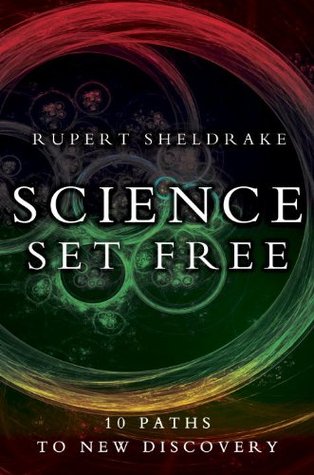More on this book
Community
Kindle Notes & Highlights
Matter turns out to be highly packed energy, transformable into other forms of energy; and therefore something in the nature of a process, since it can be converted into other processes, such as light and, of course, motion and heat. Thus one may say that the results of modern physics suggest that we should give up the idea of a substance or essence. They suggest that there is no self-identical entity persisting during all changes in time … The universe now appears to be not a collection of things, but an interacting set of events or processes
Meanwhile, according to the theory of quantum electrodynamics, brilliantly expounded by the physicist Richard Feynman, virtual particles, such as electrons and photons, appear and disappear from the quantum vacuum field, also known as the zero-point field, that pervades the universe.
Scientists, like most other people, accept evidence that agrees with their beliefs much more readily than evidence that contradicts them. This is one reason why established orthodoxies in science remain established.
physicist James Jeans took a similarly Platonic view: “[T]he universe can be best pictured … as consisting of pure thought, the thought of what, for want of a wider word, we must describe as a mathematical thinker.”
Max Tegmark proposes that any mathematically possible universe must exist somewhere: “Complete mathematical democracy holds—mathematical existence and physical existence are equivalent, so that all mathematical structures exist physically as well.”
The philosopher Charles Sanders Peirce saw the physical and mental as different aspects of underlying reality: “All mind more or less partakes of the nature of matter … Viewing a thing from the outside … it appears as matter. Viewing it from the inside … it appears as consciousness.”
The future does not exist except as potentials or possibilities in the present moment—in experience—which is always conditioned by the objective pressure of the past (the physical world). Subjectivity (consciousness, awareness) is what-it-feels-like to experience these possibilities, and choosing from them to create the next new moment of experience.
As the philosopher Arva Noë put it, “We are out of our heads. We are in the world and of it. We are patterns of active engagement with fluid boundaries and changing components. We are distributed.”
Our experience certainly suggests that our minds are extended beyond our brains. We see and hear things in the space around us. But there is a strong taboo against anything that suggests that seeing and hearing might involve any kind of outward projection.
As the philosopher Alfred North Whitehead suggested, minds and matter are related as processes in time, rather than in space (see Chapter 4). The subject chooses among its potential futures, and the direction of mental causation runs from potential futures to the present. Neither the future nor the past is material, but both have effects in the present through memories, habits and choices.
Our minds can embrace possibilities that go far beyond our own experience. Conscious minds choose among possibilities, and their choices collapse possibilities into actions that are objectively observable in the physical world. The arrow of causation is from the virtual future, going “backward” in time. In this sense minds act as final causes, setting goals and purposes.
The physicist Freeman Dyson wrote, “The processes of human consciousness differ only in degree but not in kind from the processes of choice between quantum states which we call ‘chance’ when made by electrons.”
Minds are extended in time not because they are miraculously different from ordinary matter, but because they are self-organizing systems. All self-organizing systems are extended in time, shaped by morphic resonance from the past, and drawn toward attractors in the future.
Materialism is unpersuasive if one takes one’s own experience into account. But because it is the creed of established science, its authority is enormous. That is why so many educated people try to resolve this dilemma by adopting a materialist persona in scientific discourse, while in private accepting the reality of conscious experience and choice.
The historian of science Thomas Kuhn has shown that “normal science” is practiced within a shared framework of assumptions and agreed practices, a paradigm. Phenomena that do not fit—anomalies—are routinely dismissed or explained away. Scientists are often dogmatic and prejudiced when confronted with evidence or ideas that go against their beliefs. They usually ignore what they do not want to deal with.


